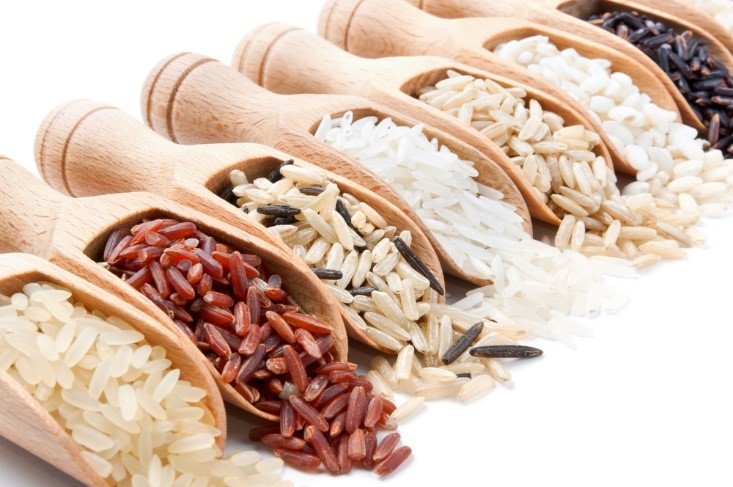7 Health Benefits of Red Rice and Why You Should Eat More
With the world consuming more rice over the years, rice has been a subject of much discussions, like which of the approximately 40,000 varieties are good for your health.
Because depending on your circumstances, some rice might even do you more harm than good.
That’s right; rice is more than just white rice. Like the better-known brown rice, red rice, a.k.a. cargo rice, is healthier than plain old white rice.
Check out the following seven incredible health benefits of red rice:
1. Whole grain and Rich in Fiber

Unlike polished white rice, red rice is unhusked or partially hulled whole grain rice, which means this type of rice also retained the bran, the germ, along with its red husk. And just like other whole grains, red rice also has a high fiber content, about 10% of your daily fiber needs.
Foods rich in fiber aid in preventing digestive health as well as make you feel satiated longer. This makes it excellent for weight management, and it also helps lower the risk of obesity.
Red rice contains more fiber than white rice, making it the better choice to lose weight and become fitter.
2. Packed with Essential Nutrients

Aside from fiber, this nutty-tasting red rice is a great source of zinc and iron, calcium, magnesium, B vitamins such as vitamin B1 present in the bran, vitamin B2, and B6, manganese, selenium, protein, and potassium. It even contains more iron and zinc at 5.5mg/100g and 3.3mg/100g, respectively, compared to white, black, brown, and purple rice varieties! Iron and zinc are essential nutrients for the blood.
Iron is essential for your body to create healthy oxygen-carrying red blood cells, whereas zinc and manganese aids in blood clotting and closing wounds. Manganese even aids in metabolism.
Calcium and magnesium are essential nutrients for having healthier and stronger bones. Vitamin B6 helps balance and create serotonin and norepinephrine, hormones that affect your mood.
Vitamin B2 and potassium are nutrients necessary for the body’s overall good health as vitamin B2 aids in the breakdown of macronutrients into energy. In contrast, potassium is essential for our body’s chemical balance.
Selenium protects the body from damage caused by free radicals and is an important nutrient for DNA production, among others.
3. Anthocyanins

The main reason why red rice is red is due to the presence of a flavonoid called anthocyanin.
This natural red colorant gives the rice a vibrant red hue and acts as an antioxidant that counteracts free radicals. Anthocyanin in red rice can reduce the spread of cancer cells and inhibit tumor formation.
Compared to brown rice, red rice has 10% more antioxidants because of anthocyanin.
Anthocyanin is also present in black rice and most red and blue-colored foods such as blueberries, raspberries, and black currants. Anthocyanin has historically been used in remedies for liver dysfunction, vision disorders, and other health disorders.
4. Lowers Blood Cholesterols

Xuezhikang, a type of red rice, has also been good for people with cardiovascular diseases as it can greatly lower LDL (bad) cholesterol.
Again, the anthocyanin present in red rice is part of the reason why it is good for you if you are a person with hypertension, as anthocyanin has not only anti-cancer properties but also possesses anti-inflammatory properties and cardiovascular disease prevention and obesity control capabilities.
Another red rice variety called red yeast rice, red rice made by fermenting a mold called Monascus purpureus over red rice, contains an active compound called monacolin K, which acts as the drug Lovastatin is prescribed by doctors to lower LDL cholesterol levels.
If you or someone you know has heart disease, making the switch from white rice to red rice is a better choice.
5. Good Choice for Diabetics

Red rice and brown rice are better for people with diabetes as they both have a lower glycemic index than white rice. Red rice’s glycemic index is only 55 as compared to standard rice’s glycemic index of 70.
It has been known that white rice contains mostly carbohydrates which translates to sugar, which is bad for you, especially if you have type 2 diabetes. And if you are someone who loves to eat rice but has diabetes, fear not. As stated earlier, rice is not just about white rice. Whole grain rice is like brown rice, black rice, wild rice, and red rice is your healthier alternative.
You don’t have to quit rice at all if you have diabetes. As long as you eat red rice in moderation with the right portions, you’ll be fine. Ty Mason from TheDiabetesCouncil.com reviews red rice about diabetes here:
6. Red rice is good for your skin

Who knew it’s not just citrus fruits that contain significant antioxidants that can prevent your wrinkles? Red rice does, too, and it’s all thanks to red rice’s natural pigment coloring.
Research has shown that the powerful antioxidant properties of anthocyanin can delay the signs of aging by preventing skin aging and UV-induced skin damage.
The same research has shown that it can also protect you from skin cancer and other skin diseases such as psoriasis by eating food rich in anthocyanin.
This shows that red rice is a better alternative than its white rice counterparts because it doesn’t just make you healthy it also makes you keep that youthful look as well. Isn’t that just a win-win?
7. Healthy even for pregnant women

The red yeast rice variety of red rice has been used in Chinese traditional medicine. It is beneficial in lowering your bad cholesterol, but pregnant and breastfeeding women, as well as children below 20 years old, are advised not to take in red yeast rice as it is considered a drug because, although rare, some side effects of red yeast rice include: headache, stomachache or bloating, dizziness, heartburn, and muscle aches and weakness that can lead to a rare but serious condition called rhabdomyolysis.
But since not all rice is equal, it follows that not every red rice is the same. Organic red rice does not have the side effects present in red yeast rice, and as such, your children and pregnant women don’t have to miss out on the health benefits of red rice.
Conclusion
Now that you’ve read about the health benefits of red rice and discovered how amazing this superfood could be for you and your family, I’d love to know what you think. Would you like to try red rice? Red rice can be found in many Asian and health food stores and even online. Is red rice already part of your daily meals?
Do you think anthocyanin is awesome too? Talk to us in the comments section below. Or you can help us spread to everyone how incredible the health benefits of red rice are by sharing this article.